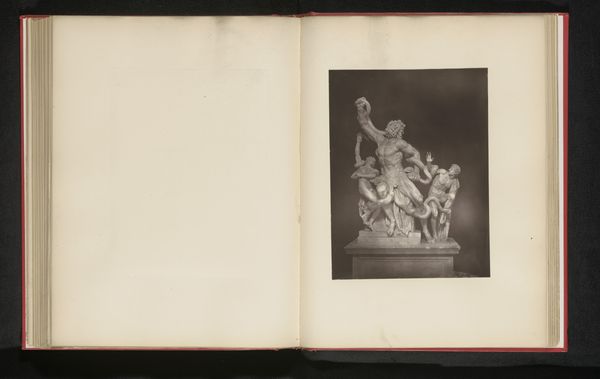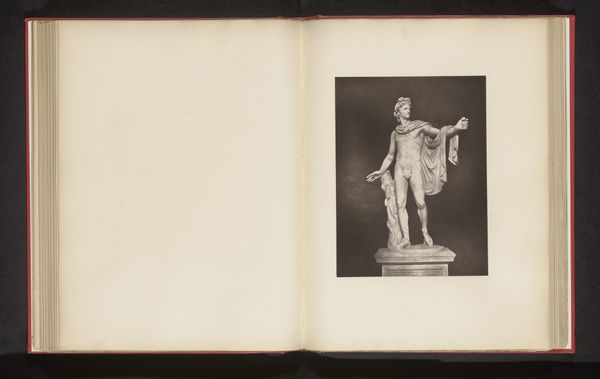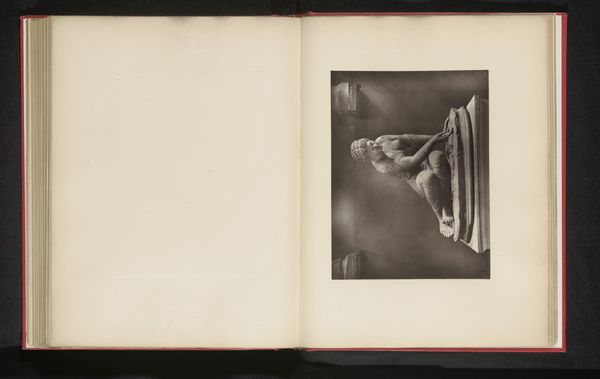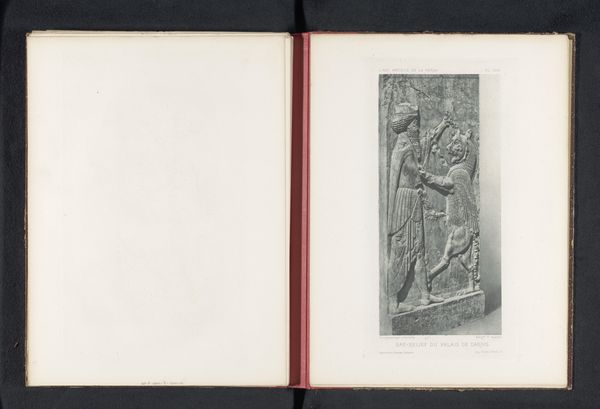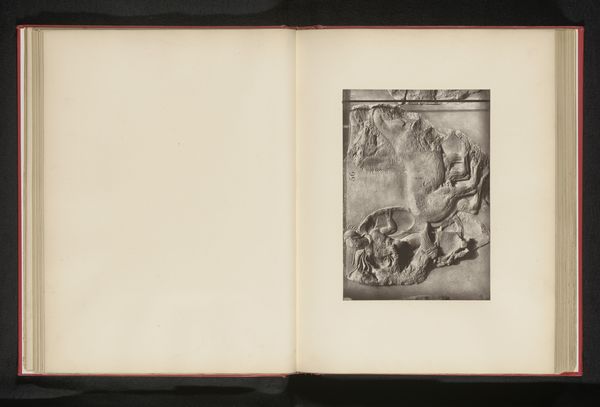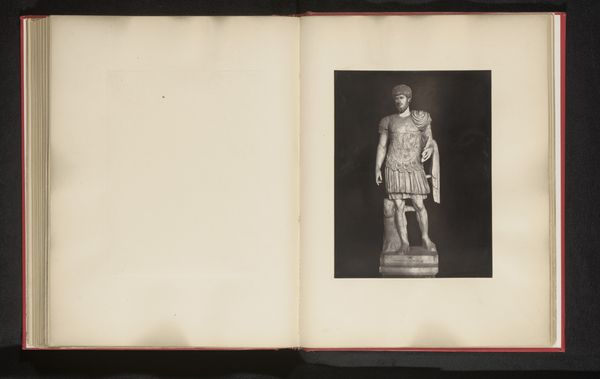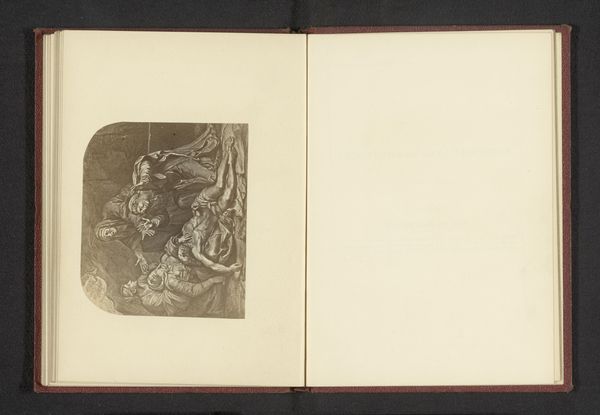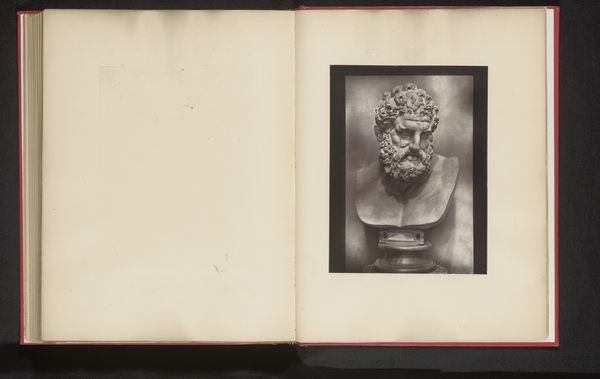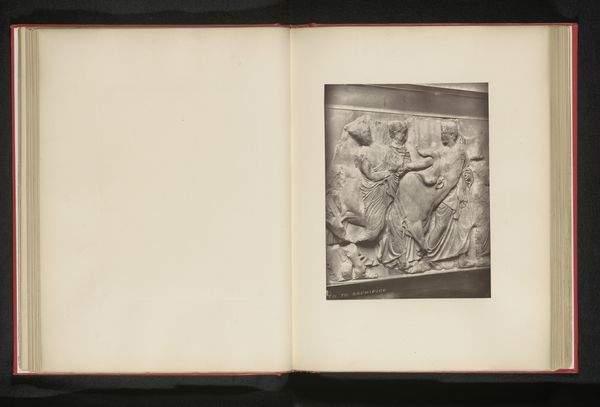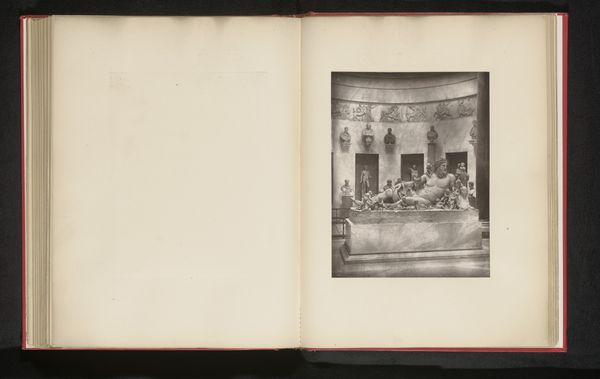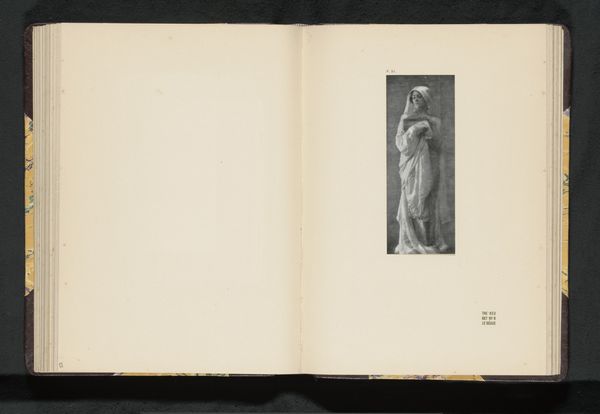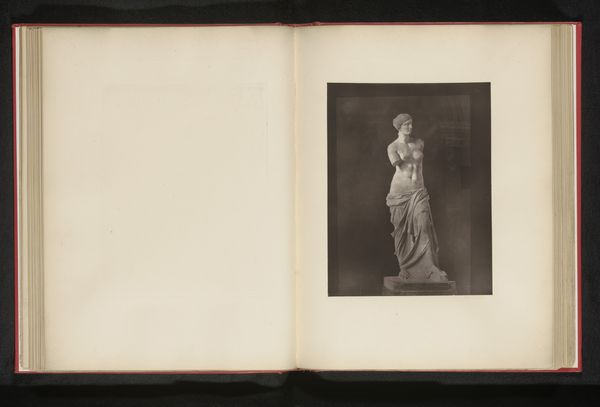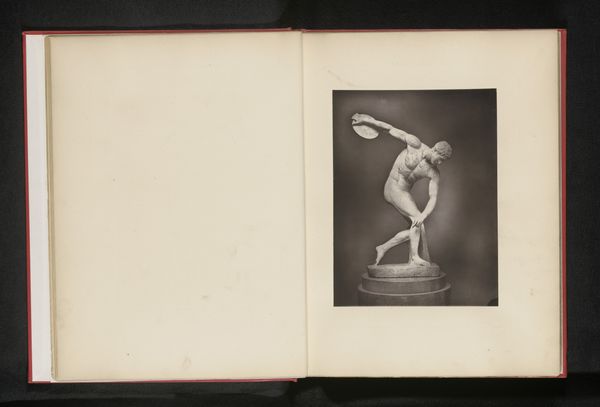
photography, sculpture
#
portrait
#
greek-and-roman-art
#
classical-realism
#
figuration
#
photography
#
ancient-mediterranean
#
sculpture
Dimensions: height 208 mm, width 158 mm
Copyright: Rijks Museum: Open Domain
Curator: Looking at this open book, what strikes me most is the monochromatic palette, a stark contrast that gives the image a sense of austere timelessness. Editor: Indeed. What we're seeing here is a photograph from before 1878, entitled "Standbeeld van de muze Thalia," or "Statue of the muse Thalia" Curator: The material translation here is interesting. To see sculpture, typically marble, re-presented through photography complicates its inherent, intended, function. How did the advent of easily accessible visual mediums, like this photograph, democratize access to artistic and historical pieces that otherwise may have been restricted to the elite or to specific locations? Editor: Precisely! Photography, in its relative ease of reproduction, allowed for classical and antique artworks to circulate amongst a wider audience. Prior to photography, these artworks may have only been viewable for individuals that traveled, further entrenching art-viewing habits in the upper class. By distributing this image on a mass scale, or, in some cases, through practices as accessible as the purchasing of books or pamphlets, new avenues opened to circulate visual art and create new viewers. This piece also begs the question; do viewers respond to sculptures in museum spaces, or books differently because of accessibility? Curator: Good question! I also think this photography opens doors to different forms of valuation of classical art; now photography has the potential to stand alone as artwork. This one captures not only the sculpture of Thalia but also two additional busts, emphasizing repetition as an intentional art choice in photography. Did the arrangement here intentionally reference tableau vivant productions? Editor: That's quite insightful. It highlights how photography not only recorded art but participated in contemporary aesthetic trends. I imagine such images spurred both wider artistic engagement while also enabling new forms of scholarship and connoisseurship. Curator: A valuable perspective. It highlights how artistic reproduction enables unique possibilities. Editor: Absolutely. Considering its historic implications, this artwork's continued study allows unique intersections between past and present visual interpretation.
Comments
No comments
Be the first to comment and join the conversation on the ultimate creative platform.
